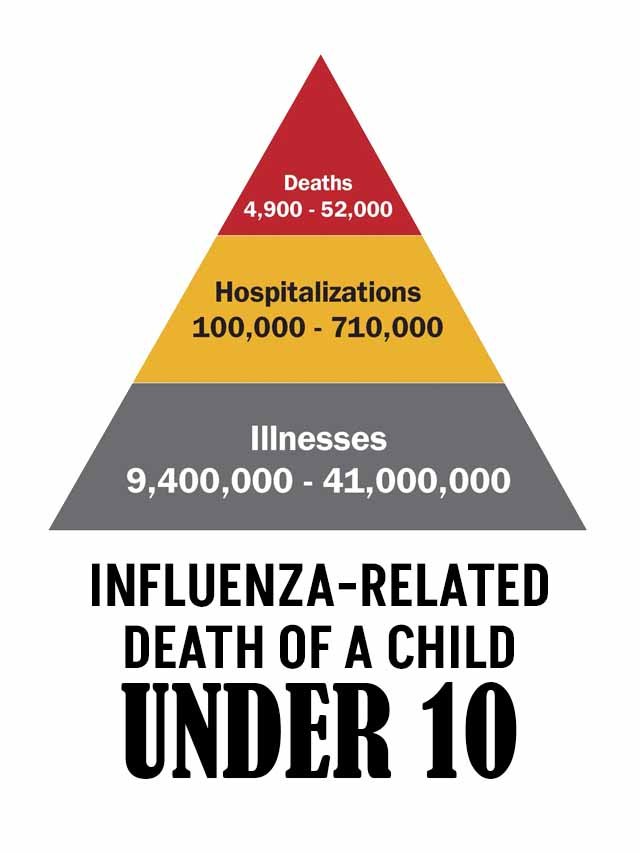HEALTH NEWS
Tragic Reality: B.C. Centre for Disease Control Reports Influenza-Related Death of a Child
-
 Rahul Priydarss
Rahul Priydarss - January 26, 2024

I
n a sombre update from the B.C. Centre for Disease Control, another influenza-related death of a child under 10 has been reported.
Table of Contents
Introduction Influenza-Related Death :
In a sad update from the B.C. Centre for Disease Control, another influenza-related death of a child under 10 has been reported. This heartbreaking news underscores the ongoing threat posed by influenza, a virus that can be particularly severe, especially among the vulnerable young population. In this article, we will delve into the details of this unfortunate incident, explore the impact of influenza on children, and discuss the importance of vaccination and preventive measures to safeguard our communities.
The Tragic Incident:
The recent report from the B.C. Centre for Disease Control reveals that influenza can lead to fatal outcomes, even in the young and seemingly healthy. The details of the incident are yet to be fully disclosed, but it serves as a stark reminder that influenza is not to be taken lightly. Children under 10, with their developing immune systems, are particularly susceptible to the severe complications that can arise from the flu.
Impact on Children:
Influenza can manifest differently in children compared to adults. While some may experience mild symptoms, others can face severe complications, including pneumonia, dehydration, and, in tragic cases, death. The influenza virus is notorious for its ability to mutate, making it challenging to predict and prevent its spread effectively. This unpredictability, combined with the vulnerability of young immune systems, highlights the need for comprehensive strategies to protect children from the flu.
Preventive Measures:
Vaccination remains the most effective tool in preventing influenza and its potentially devastating consequences. The Centers for Disease Control and Prevention (CDC) recommends annual flu vaccination for everyone aged six months and older, with special emphasis on children, the elderly, and individuals with underlying health conditions. Vaccination not only helps protect the individual but also contributes to community immunity, reducing the overall spread of the virus.
Aside from vaccination, practising good hygiene is crucial in preventing the transmission of influenza. Encouraging children to wash their hands regularly, covering their mouths and noses when coughing or sneezing, and avoiding close contact with sick individuals are essential habits that can mitigate the risk of infection. Educational campaigns targeting schools, parents, and healthcare providers can play a vital role in promoting these preventive measures.
The Role of Healthcare Providers:
Healthcare providers play a pivotal role in influenza prevention, diagnosis, and treatment. Early identification of influenza cases, especially in vulnerable populations like children, is crucial for timely intervention. Healthcare professionals need to educate parents about the signs and symptoms of influenza, encouraging them to seek medical attention promptly if their child exhibits severe or worsening symptoms.

Furthermore, healthcare providers should actively promote and administer influenza vaccinations. This includes incorporating vaccination campaigns into routine healthcare visits, school-based vaccination programs, and community outreach initiatives. Accessible and widespread vaccination is key to achieving high vaccination rates, reducing the overall burden of influenza, and protecting the most vulnerable members of society.
Community Awareness and Collaboration:
In the wake of this unfortunate incident, it becomes evident that fostering community awareness is paramount. Local health departments, schools, and community organizations should collaborate to disseminate information about the importance of influenza vaccination and preventive measures. Community engagement events, informational campaigns, and school-based initiatives can contribute to a more informed and proactive community response.
Government Support and Policies:
Governments at various levels play a crucial role in shaping influenza prevention policies and ensuring access to vaccination. Adequate funding for vaccination programs, public health campaigns, and research on emerging influenza strains is essential. Policymakers should prioritize initiatives that target vulnerable populations, with a special focus on children, to create a robust defence against influenza.
Review:
1- The recent article on the influenza-related death of a child under 10, reported by the B.C. Centre for Disease Control, serves as a poignant reminder of the severity of the flu virus.
2- This article delves into the tragic incident reported by the B.C. Centre for Disease Control with a balanced mix of empathy and factual information. The emphasis on the unique vulnerabilities of children under 10 to influenza, along with the practical preventive measures, provides a clear roadmap for individuals, healthcare providers, and communities.
3- The B.C. Centre for Disease Control’s recent report on another influenza-related death of a child under 10 is skillfully dissected in this article. The narrative not only highlights the heart-wrenching reality but also effectively communicates the significance of vaccinations and community engagement in preventing such tragedies.
Frequently Asked Questions (FAQs):
A1: The report underscores the serious threat influenza poses, especially to young children. It highlights the potential severity of the virus and the importance of taking preventive measures to protect vulnerable populations.
A2: Influenza can lead to severe complications in children, including pneumonia and dehydration. Children under 10 are more vulnerable due to their developing immune systems, making them susceptible to the unpredictable nature of the flu virus.
A3: Vaccination is the most effective preventive measure. The CDC recommends annual flu vaccination for children aged six months and older. Additionally, practising good hygiene, such as regular handwashing and avoiding close contact with sick individuals, helps reduce the risk of infection.
A4: Community awareness is crucial. Local health departments, schools, and organizations should collaborate on educational campaigns. Healthcare providers play a vital role by promoting vaccinations, identifying cases early, and educating parents about influenza symptoms to ensure timely medical intervention.

-Remember, Always consult with healthcare professionals or Doctors for personalised advice related to medical conditions.
Conclusion:
The recent influenza-related death of a child under 10, as reported by the B.C. Centre for Disease Control, is a tragic reminder of the serious consequences that influenza can have, especially on our youngest population. It is incumbent upon individuals, healthcare providers, communities, and policymakers to work together to prevent further tragedies. Through vaccination, preventive measures, community awareness, and effective policies, we can strive to protect our children and communities from the devastating impact of influenza.
Previous Post





